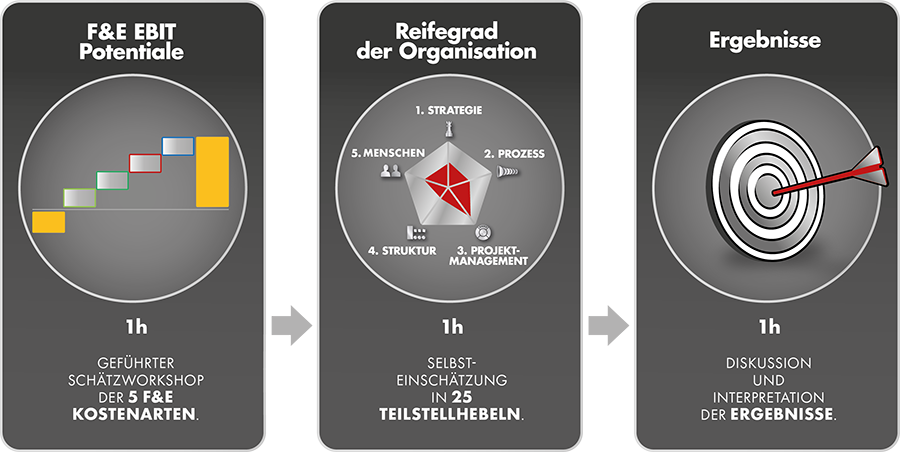1. Houston we´ve had a Problem!
Our innovation rate (revenue from products < 3 years after market introduction) was 7%. The benchmark was 30%. Our product portfolio consisted of 75% Cash Cows and Poor Dogs. Only 25% were Questionsmarks and Stars. Over 80% of our revenue came from existing products in existing markets. Some of our competitors were two innovation cycles (Time to Market) ahead in key technologies.
The current company profitability was not that bad, but we were living off the past.
That was the starting point of our journey.
INNOVATIONSMANAGEMENT


2. Doing things on the side doesn’t work.
Out of 100 product ideas, 10 product experiments were conducted resulting in 1 bestseller. We knew from the outset that it would initially cost money. Therefore, we allocated 10% of the development budget to pre-development. To avoid falling into the trap of the ivory tower, pre-development was led by a few experienced key players who themselves were not directly involved in operational work on new technologies, but rather steered and organized the pre-development. Following the instantaneous water heater principle, “young guns” were introduced into pre-development, supervised by “old hands”. They were either brought in from outside as part of their onboarding process or internally. They went through the entire process from functional models and prototypes through to series development and ended with market introduction. A compelling and attractive concept that enabled us to attract very good high-potential talents.
The typical breaking point of “not invented here” or “by me” was eliminated.
INNOVATIONSMANAGEMENT
3. The right brains.
The sense of urgency was immense and everyone was aware of it.
Now, it was crucial to find the right minds to shape the products and the product portfolio of tomorrow. We had some experts who were often eccentric, not very communicative, but possessed immense depth of knowledge. Guiding them with the right guidelines, focusing on the right topics, and especially staying committed through setbacks – that was the challenge of a product owner team. We solved this through the AGILE operating system.
In management, there was a sponsor for each innovation search field. To be honest, a competitive spirit emerged among us, which greatly spurred us on.
A central point of contact played a crucial role in organizing and steering the entire initiative. We called this person the innovation manager.
INNOVATIONSMANAGEMENT


4. Systematics.
From the guidelines of the strategy, the search fields were derived.
Search fields are important for identifying problems within them. Problems are more important than solutions. What good are answers to questions never asked?
To identify problems, we applied the CPM method (Customer Process Monitoring). We observed customers or users without bias, without already having a prototype or preconceived questions in mind.
The problems that have a high market potential and can be realized with our core competencies – those were the most interesting ones. For these, we then sought solution ideas. Generating ideas, evaluating them, and refining them selectively. That is the task of the innovation process.
Innovation has a lot to do with intuition. Yet, there’s much that can be done to stimulate participants in a creativity workshop. With over 12 creativity techniques, from the headstand method to de Bono’s six hats, we had a toolbox from which to draw. Thinking out-of-the-box doesn’t have to be left to chance.
At regular intervals, we organized Techathons. We locked ourselves in for 2 to 4 days and only emerged once we had concrete prototypes in hand. These events are not only extremely fun but also highly effective. It’s an honor to be invited to a Techathon.
In our idea management tool, every employee can enter their ideas at any time of day or night. They immediately receive feedback from the system on whether their idea ranks higher according to defined evaluation criteria and thus has a chance of realization.
Innovation requires a system.
INNOVATIONSMANAGEMENT
5. The Innovation Machine.
A former CEO of Knorr Bremse said: “My career began in production. Innovation and R&D are not my focus. But it can’t be that hard: I imagine we install an innovation machine and new product ideas come out regularly. Just like in production – almost non-stop.”
To be honest, I thought: only someone who has never seen R&D from the inside could have such ideas. Nevertheless, his impulse never left me. It took some time for me to understand: He was right. It would be far too risky for a company to leave product ideas to chance. A company that wants to become or remain a technology leader needs an organization where innovations are generated with regularity and security.
INNOVATIONSMANAGEMENT

Self-Assessment Workshop

Improvement Potential

Assess INNOVATIONS MANAGEMENT Potential.
1. Current State Analysis.
– First, we want to understand your current situation.
2. Self-Assessment-Workshop.
– In the self-assessment workshop, we will show you best practices.
3. Action Plan.
– Based on this, you assess your need for action.
4. Improvement Potential.
– We estimate the quantitative improvement potential.
5. Vision.
– Together, we define a vision.
6. Implementation Plan.
– We establish an implementation plan.
We estimate your R&D performance.
The R&D Performance Self-Assessment.
In a 3-hour workshop with the R&D leadership team, you will learn about our methodology:
Part 1: Self-assessment of R&D EBIT cost potentials.
Part 2: Maturity level of the organization across 5 levers.
Part 3: Result interpretation.
By narrowing down through scenarios, it quickly becomes clear whether an initiative is worthwhile.

